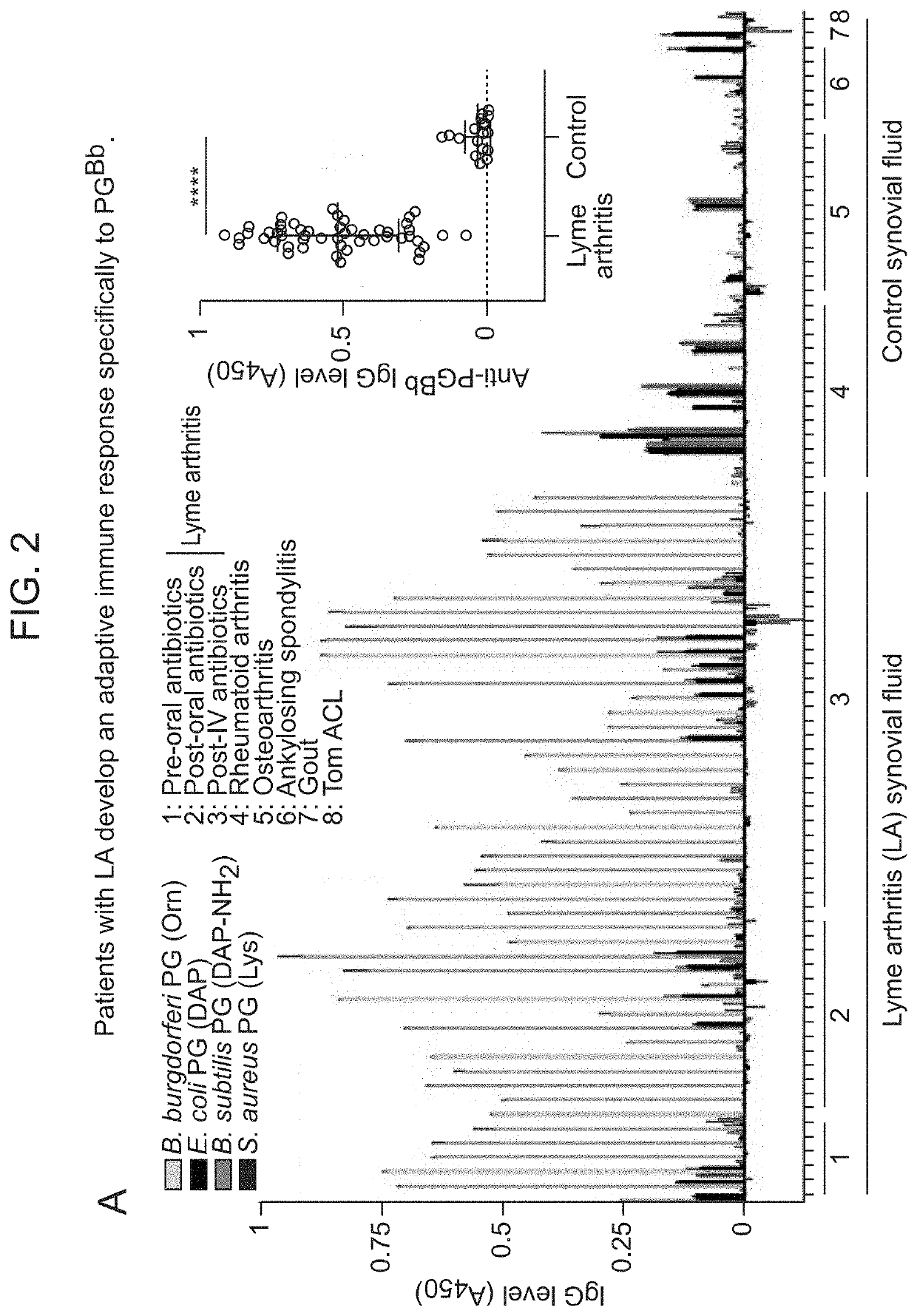Borrelia burgdorferi peptidoglycan as a diagnostic and target for therapeutic intervention of lyme disease-related pathologies
a lyme disease and peptidoglycan technology, applied in the direction of antibacterial agents, peptide/protein ingredients, instruments, etc., can solve the problems of limiting antibody-mediated recognition, complicating the treatment of some putative lyme disease-related symptoms by physicians, etc., to reduce, inhibit, or improve one or more symptoms of lyme disease, and diagnose the individual. , the effect of detecting infection within a relatively short period of tim
- Summary
- Abstract
- Description
- Claims
- Application Information
AI Technical Summary
Benefits of technology
Problems solved by technology
Method used
Image
Examples
example 7
Analysis of the Ability of Mouse Monoclonal Antibodies to Recognize Peptidoglycan of Different Bacterial Origin
[0185]As shown in FIG. 12, mouse hybridoma cells lines, named H1′ and ‘H2’, capable of producing monoclonal antibodies were identified for their ability of recognizing peptidoglycan. The antibody produced by the H1 hybridoma shows high selectivity toward peptidoglycan of B. burgdorferi (Bb). In contrast, the antibody derived from the H2 hybridoma is capable of binding to a broader set of peptidoglycans. The specificity of the antibody was tested in an enzyme-linked immunosorbent assay (ELISA) with various types of peptidoglycan isolated from different bacteria. B. burgdorferi peptidoglycan contains ornithine at the third position of the stem peptide, while S. aureus (Sa) and E. coli (Ec) peptidoglycan contain lysine and meso-diaminopimelic acid, respectively. The amount of peptidoglycan-bound antibody was quantified based on the absorbance value at 450 nm. This assay demons...
PUM
| Property | Measurement | Unit |
|---|---|---|
| time | aaaaa | aaaaa |
| time | aaaaa | aaaaa |
| concentration | aaaaa | aaaaa |
Abstract
Description
Claims
Application Information
 Login to View More
Login to View More - R&D
- Intellectual Property
- Life Sciences
- Materials
- Tech Scout
- Unparalleled Data Quality
- Higher Quality Content
- 60% Fewer Hallucinations
Browse by: Latest US Patents, China's latest patents, Technical Efficacy Thesaurus, Application Domain, Technology Topic, Popular Technical Reports.
© 2025 PatSnap. All rights reserved.Legal|Privacy policy|Modern Slavery Act Transparency Statement|Sitemap|About US| Contact US: help@patsnap.com



